(Disclaimer: This webpage contains Amazon affiliate links. If you make a purchase through a link, Habitot may earn a small commission at no extra cost to you.)
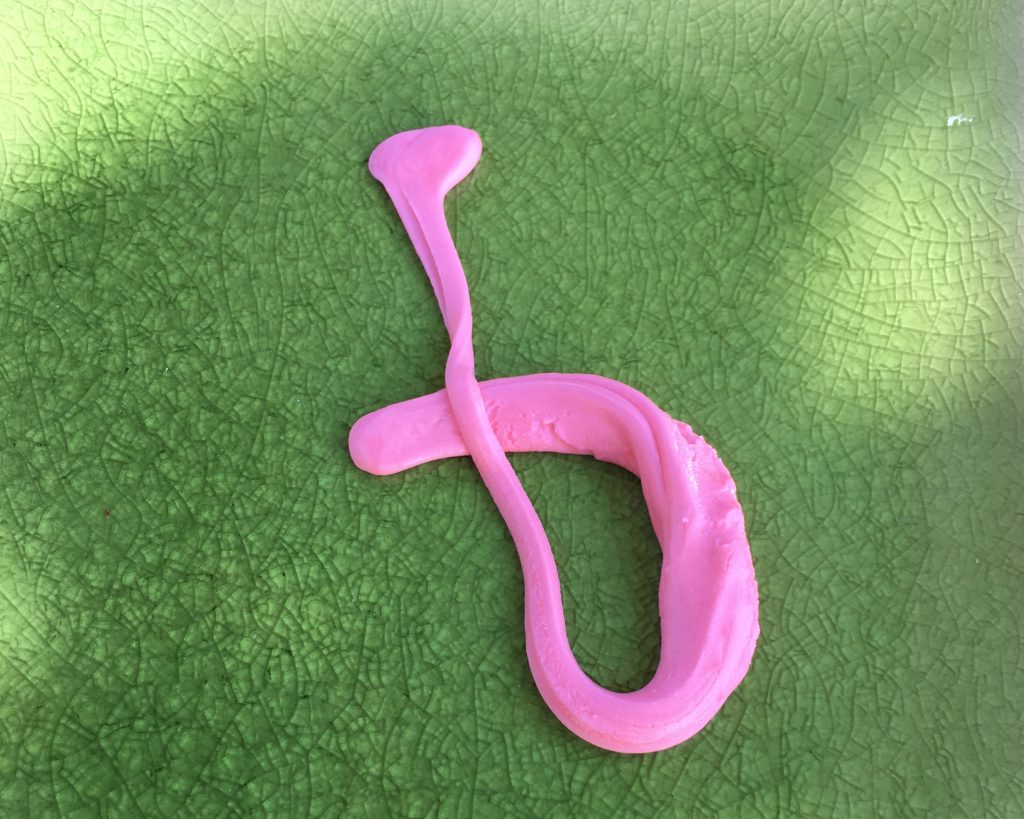
Create stretchy, squishy, and bouncy slime using just two ingredients: cornstarch and liquid dish soap. This recipe doesn’t include glue or any harsh activator ingredient like borax, so it’s eco-friendly and non-toxic! Slime is an engaging and hands-on introduction to early science concepts, such as non-Newtonian fluids and viscosity.
(Safety: Please don’t let children put the slime or its ingredients in their mouths. You can also try these taste-safe recipes.)
What We’re Learning and Skills We’re Building
- Sensory development – touching the slime and the other materials to learn about texture
- Measurement – using both dry and liquid measuring cups to add the correct amount of ingredients
- Hand-eye coordination – practicing precision while scooping and pouring the ingredients
- Language acquisition – learning the meaning of words like “solid,” “liquid,” “non-Newtonian fluids,” and “viscosity,” as well as descriptive words for the slime and the other ingredients
Materials
- ½ cup cornstarch
- ⅓ cup liquid dish soap (in a liquid measuring cup)
- Mixing bowl
- Spoon
- Food coloring
- Tray, plate, baking sheet, or plastic placemat to contain slime during play
- Objects for play: Plastic toys with patterns and textures; plastic cups; toy dolls and animals to make footprints; strawberry baskets; child-safe plastic/metal kitchen utensils; colander; etc.
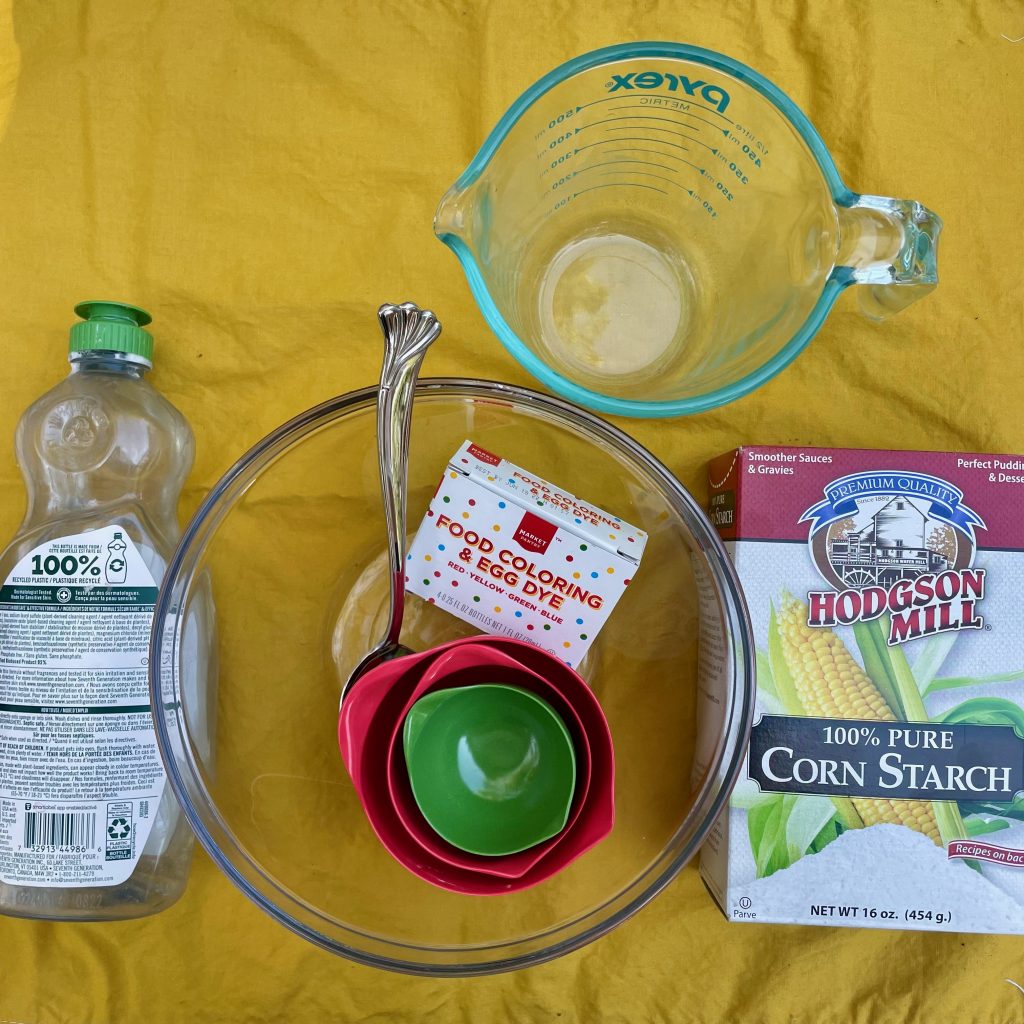
Making the Slime
- Before mixing the ingredients together, invite your child to explore the cornstarch and the dish soap separately with their hands. Ask, “What does each ingredient feel like? Powdery, slippery, dry, gooey?”
- Measure ½ cup of cornstarch and pour it into the mixing bowl.
- In a liquid measuring cup, measure ⅓ cup of dish soap and add it to the bowl.
- Mix the ingredients together with a spoon. Once the ingredients begin to clump, both you and your child can use your hands to continue kneading. Ask, “What do you see and feel happening as we mix? Are the ingredients changing?”
- Squeeze a few drops of food coloring into the mixture and continue kneading/mixing. (Note: Food coloring can temporarily stain hands and permanently stain fabric.)
- After about five minutes of mixing, the slime should be ready. It’ll have a consistency that’s between playdough and slime made with glue (if it’s too sticky, sprinkle in a little more cornstarch. If it’s crumbly, add 2-3 more drops of dish soap).
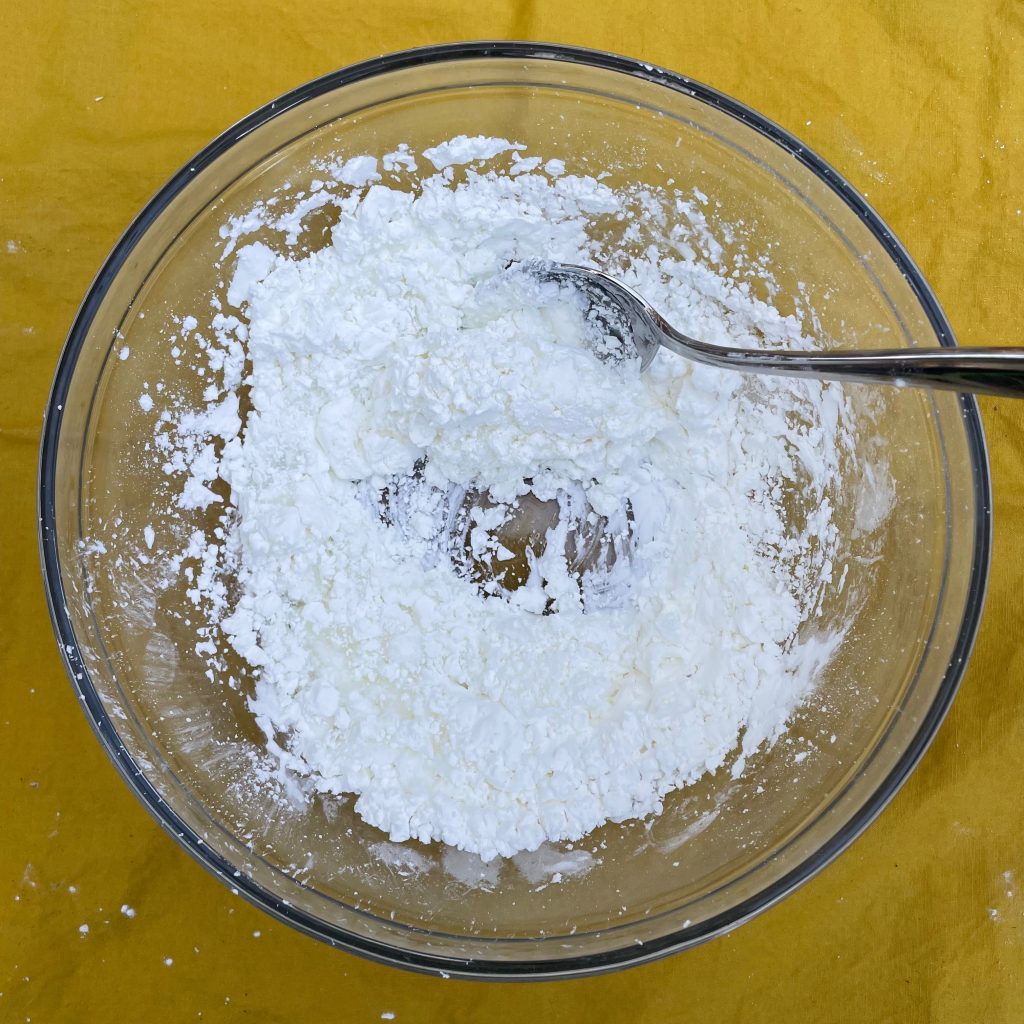
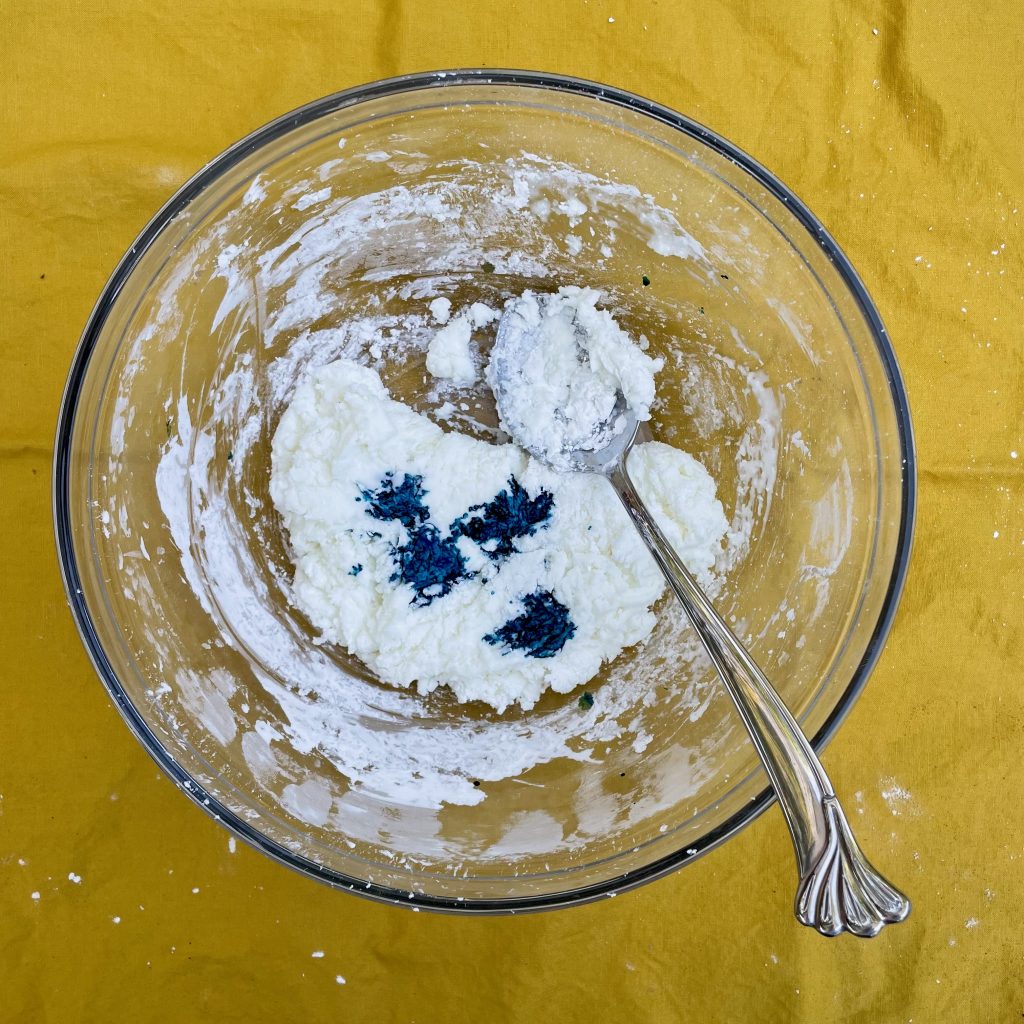
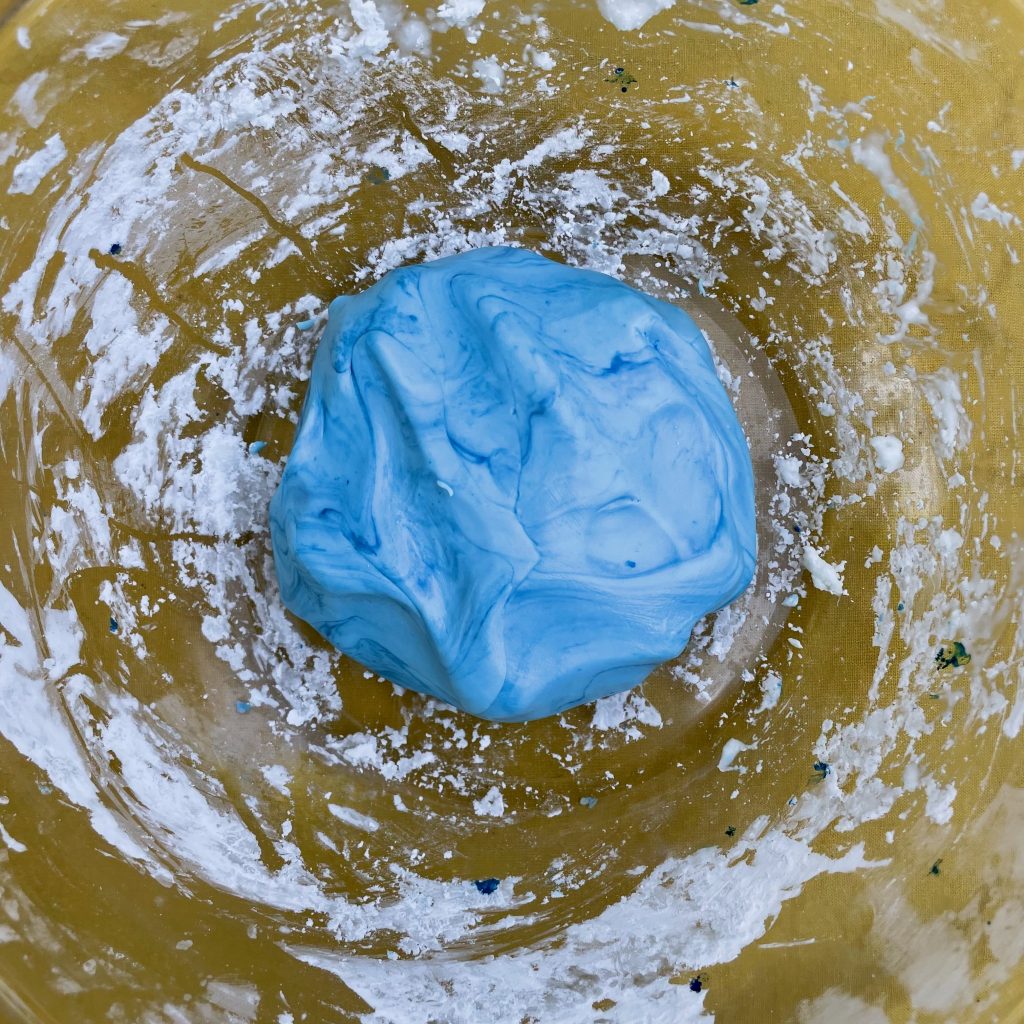
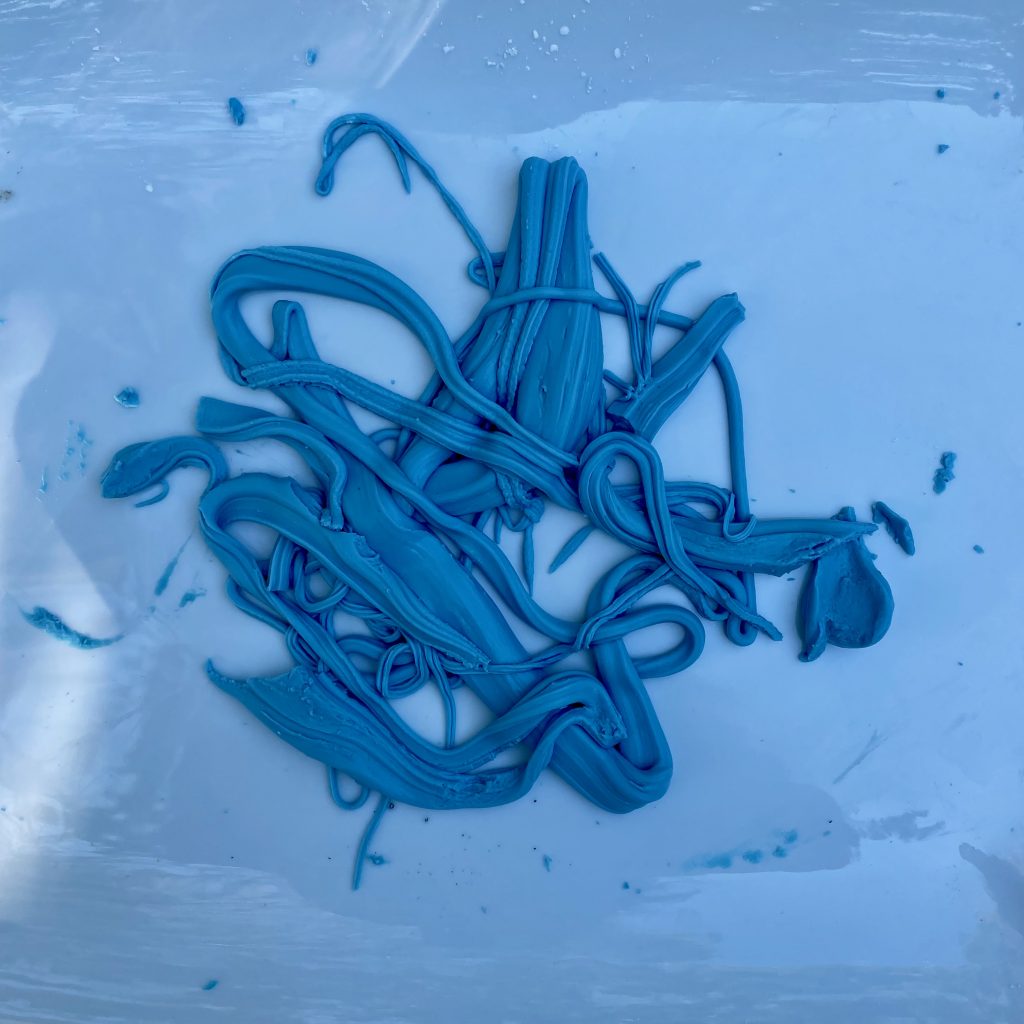
Exploring and Learning from the Slime
- Give your child time to explore the slime on their own — stretching, squeezing, dripping, pulling it apart, and putting it all back together.
- Introduce tools and objects one at a time to boost their exploration of the slime. Things like cups, child-safe cutlery, plastic toys with cool patterns and textures are all fun additions to sensory play. (See “Objects for play” above for more suggestions.)
- Show them how to roll/twist the slime into a long worm or snake shape. As they hold the ends of the “worm” in each hand, have them extend their arms to see how far they can stretch it before it breaks.
- Have them compare the slime to a liquid they’re familiar with, like water. Ask, “How does the water feel compared to the slime? Is it thinner and less squishy?” Slime is in between a liquid and a solid. It has high viscosity, meaning it flows (moves) very slowly because it’s so thick. Water has low viscosity and flows quickly.
- Slime is an example of a non-Newtonian fluid. These types of fluids look and feel like liquid when they’re resting, but they become more solid when force is applied. Have your child rip off a fist-size ball of the slime and rest it in their hand. Then, have them tightly squeeze the slime. Ask, “Did the slime feel different when you squeezed it?” Learn more about Non-Newtonian fluids and see some cool experiments to try here!
(Note: If the slime is left untouched for a while, it may become crumbly. Add a drop of dish soap and mix to bind it together again. Unfortunately, the slime does not store well, so it’s best to use it the same day it’s made.)
Cleanup
Wash your hands thoroughly with warm water for at least one minute to get all of the dish soap off your skin. Any slime left on countertops can be easily wiped off with warm water and a sponge, and it will go down the drain without any problems.

